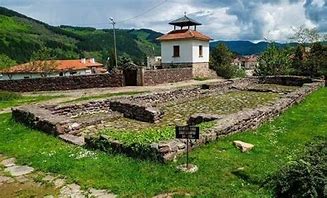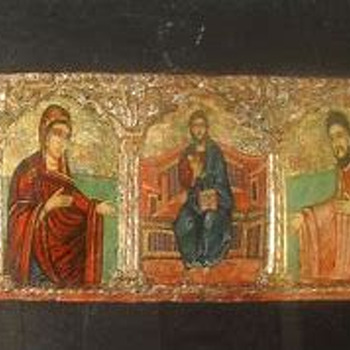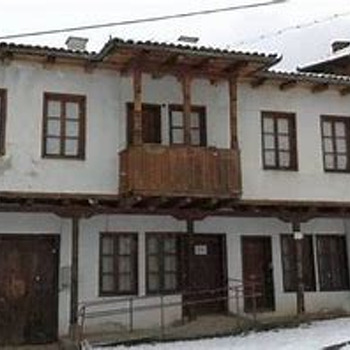Catholic Cathedral of Santa Maria
Overview
The Holy Mother of God (Latin: Sancta Maria) is a Bulgarian medieval Catholic church in ruins in the town of Chiprovtsi, Bulgaria. The temple was the seat of the Bishop of Sardis. From its construction in 1371 until the Chiprovtsi uprising of 1688, it houses a miraculous icon of the Mother of God, brought from the Bosnian mining town of Olovo. After the Chiprovtsi uprising, she was taken by Bulgarian refugees to Sibiu, Transylvania. A group of Saxon ore miners (called Sassi in Bulgaria) settled in the ore-rich regions of Southeast Europe. In the 13th and 14th centuries, Germans settled in and around Chiprovtsi in northwestern Bulgaria, then part of the Second Bulgarian Kingdom, and began mining ore in the western part of the Balkan Mountains. They receive special privileges from the Bulgarian Tsar Ivan Shishman. They also established Catholicism in this part of the Balkans. In 1371, an icon of the Mother of God, considered miraculous, was transferred from the Bosnian mining town of Olovo, and the Catholic Church of St. Mary was built in her honor. After the region was included in the Ottoman Empire, many of the miners emigrated, and the rest were Bulgarianized by creating mixed families and assimilated by the local population in the middle of the XV century.
In 1601, Peter Solinat, who had previously resided as a Franciscan missionary and later as an apostolic visitor, was ordained bishop of Sofia (Sardis) at the request of the Catholics of Chiprovtsi. With this act, the temple became a cathedral - the seat of a bishop. In 1624, under the second Bishop of Sofia, Iliya Marinov, the Franciscan mission in the Bulgarian lands was separated from the Bosnian mission, so the episcopal see became the center of a separate separate Franciscan territorial-administrative unit - Bulgarian Custody (Custodia Bulgara), including and part of Hungary and his power extended over a wider area beyond the diocese.
In 1640, the Bishop of Sofia, Petar Bogdan, described the church: “There is a church and a monastery dedicated in honor of the Mother of God; it is built in the form of a curved furnace, 25 steps long and 7 steps wide; decorated whole with various images and images of saints; there are three altars, the largest of the Virgin, one of St. Cross, and the third of St. George the Martyr. Outside there is an (altar) attached to the wall of the church, where the service is performed on holidays, because the church does not accommodate the whole nation… “Due to the Ottoman ban on the use of bells, the beginning of services is announced by hitting a board.
In 1642 the success and exceptional prestige of Bishop Peter Bogdan led to the elevation of the diocese to an archbishopric. According to Bishop Peter Bogdan, the monastery is located next to the church.
In 1672 a new church was built on the foundations of the old one, but with larger dimensions. The temple was destroyed during the defeat of the Chiprovtsi uprising in 1688.
After the Chiprovtsi Uprising, Bulgarian Catholics fled across the Danube and carried with them even a heavy stone statue of the Virgin Mary in full human stature, which had previously adorned the Cathedral of St. Mary. The transferred statue still adorns the facade, to the left of the bell tower, of the Bulgarian church to the Franciscan monastery in the town of Deva in Romania, founded in 1724.
In the 80s of the XX century during archeological excavations in the ruins of the church were found the bones of Archbishop Peter Bogdan, Bishop Elijah Marinov and other Franciscan monks.
Recommended
- Museum of History
- Catherine's house
- The colorful fountain
- Remains of the Catholic Cathedral of St. Marina
- Gushovo Monastery and Church
- Chiprovtsi Monastery "St. John of Rila"
- Lopushan Monastery
- Klisura Monastery


 Bulgarian
Bulgarian Romanian
Romanian


